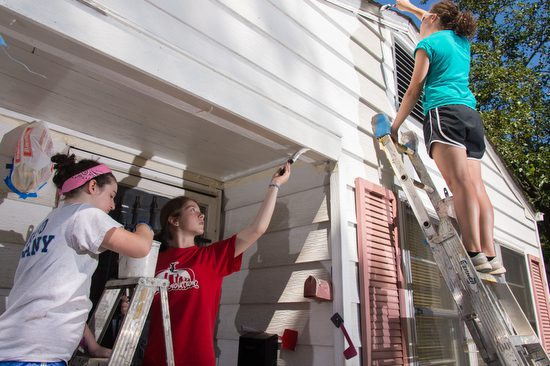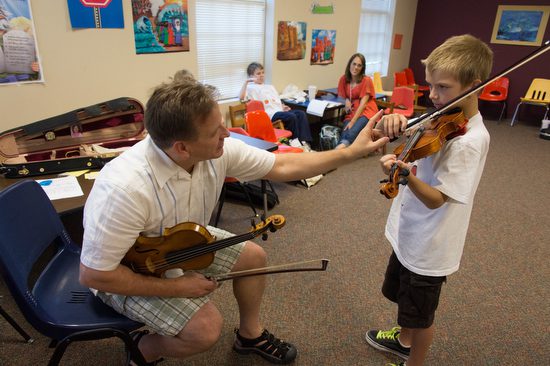The Aha! effect refers to the common human experience of suddenly understanding a previously incomprehensible problem or concept. — Wikipedia
Text is the core communications medium for most organizations. Due to this over reliance on text these organizations share a common mistake of writing a visual story without watching the visuals in front of them as they write. Too often, a video or slide show story is not connected to the text. A good story is hooked to the visuals and audio.
 |
| Roswell Presbyterian Church’s Middle School Youth with SonServants and Widows Harvest to help do projects like: building wheelchair ramps and landings, scraping and painting houses, putting new roofs on homes, or landscaping and yard work. |
Now there are a few things that are very difficult to write that a photo can help communicate. Emotional connections are moments where a gesture can connect people that trying to describe this would take a few pages of text.
A few photos of a story can help set the tone and help the writer get deeper into the content. Your audience will appreciate a story with more meat to it than one that glosses over the content.
I thought capturing a student working on a fun craft project showed that creativity is in these students and looking for ways to come out. While music is one way the workshop was helping these students, they also provided a moment away from the music to be creative as well.
Show what you can
 |
| Detain shot of the lab project for DNA testing procedure. |
Now I wanted you to first see the closeup photo here of the materials the students will be extracting the DNA from in a biology class. Notice how the photo begs the question of what is this?
 |
| Here the student is getting a measured amount of the substance that will be tested. |
Notice in the second photo here of the lady in the lab there is less of a question and more of a statement that happens. Maybe the closeup photo is a better hook and once you are into the story you use the photo showing the taking a sample by the student.
Now imagine the story on teaching DNA extraction tests without any of these photos. Which one would you even begin to read?
Physics Lab
 |
| The professor asked the students to gather around her as she walked them through the lab experiment they were doing that day. |
What is very interesting here is how this professor walked the students through each step. She even would pause to talk about how if you don’t do one thing then your results will be affected.
Now just hang around any class where students are doing something for the first time and you will see this next moment. They come to the teacher and ask a question. The teacher then realizes there is some missing information the student is not giving them.
 |
| Even after the professor had showed them this step, there is still more show and tell needed to be sure the concept is understood. |
Now if you are a writer experienced a similar teaching moment like this physics class, then you understand how images will help clarify a moment.
If you look closely in the last photo the girl in the purple is having a small “eureka moment.”
Don’t fall into the trap of just taking photos and using them. Be sure your visuals are communicating. The best thing you can do is to show a photo to someone who doesn’t know anything about the story or the people and things in the photo. Ask them to tell you what they see when they look at the photo. Not the obvious things, but like in photo of the teacher laughing they may say I see a good teacher.
You might ask why and they would say she looks fun and the students are reacting to her positively.
Remember to “Show what you can, and tell what you can’t.”



